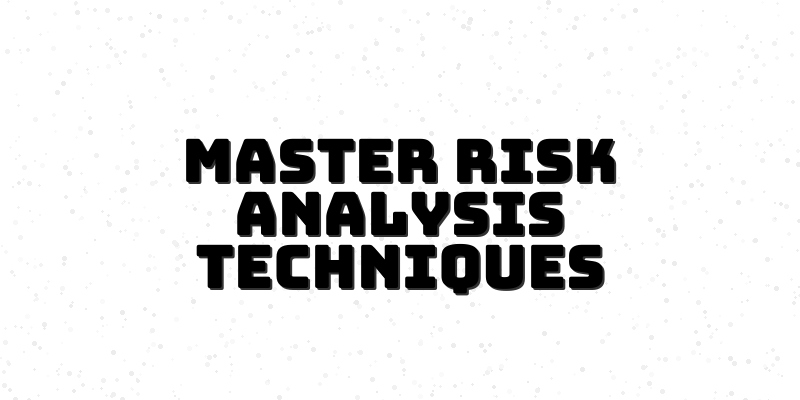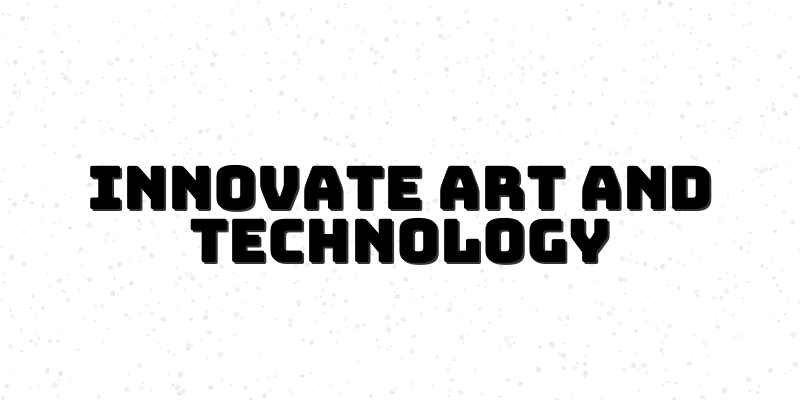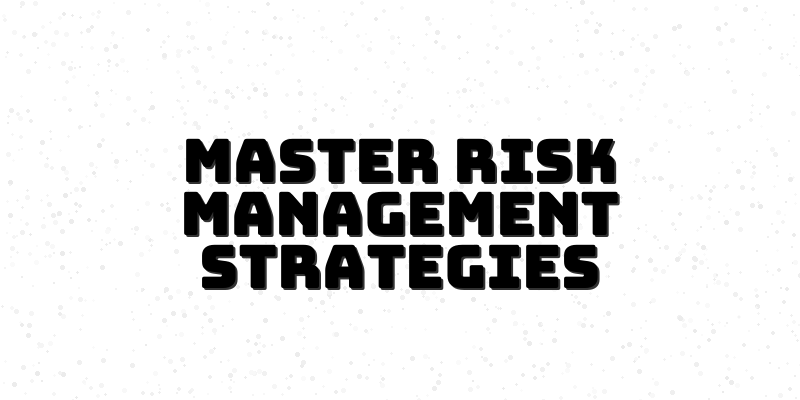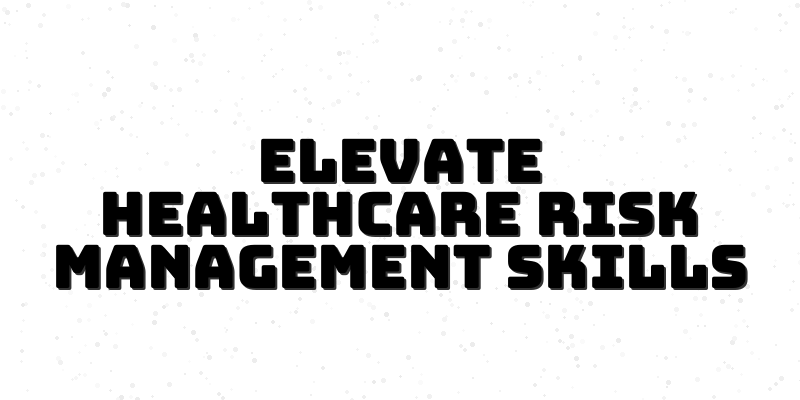Mastering Advanced Risk Management Techniques: A Comprehensive Guide
In the fast-paced world of business, effective risk management is no longer just a safety net; it's a critical driver of success. As organizations face an increasingly complex landscape of risks—from cyber threats to regulatory changes—the ability to employ advanced risk management techniques becomes indispensable. This blog post delves deep into various strategies for enhancing your risk management framework, providing you with valuable insights to implement in your organization. Join us on this journey to understand how advanced techniques can transform your approach to risk management.
Understanding Advanced Risk Management Techniques
Risk management has evolved significantly over the last two decades, shifting from basic identification and mitigation approaches to more complex methodologies. Understanding these advanced techniques is critical for today's risk professionals seeking to navigate the intricate fabric of modern business risks. Key methodologies require a nuanced approach that blends quantitative analysis with qualitative insights, ensuring a balanced view of potential threats and opportunities.
One of the fundamental concepts in advanced risk management is the application of quantitative techniques. These include statistical analyses that help in forecasting risks based on historical data, which can significantly aid in decision-making processes. By harnessing quantitative tools like Monte Carlo simulations or value-at-risk (VaR) models, organizations can gain a clearer perspective of potential outcomes and their probabilities.
Moreover, embracing qualitative assessments enhances the richness of risk understanding. It acknowledges the unpredictable human factors—such as behavioral risk or cultural dynamics—that numbers alone cannot capture. By integrating both quantitative and qualitative methods, organizations can develop a robust risk profile that supports informed strategic planning.
The Role of Quantitative Analysis in Risk Management
Quantitative analysis serves as the backbone of any advanced risk management strategy. Its systematic approach to measuring and analyzing risk allows organizations to create data-driven solutions. For example, risk quantification enables risk managers to estimate and prioritize risks using metrics like impact severity and likelihood, essential in the decision-making matrix.
Factors such as market volatility and operational uncertainties may be assessed using tools such as risk sensitivity analysis, which helps in understanding the potential impacts of these risks on different business scenarios. In practical terms, it means conducting thorough risk assessments that produce actionable insights for stakeholders, thereby translating theoretical frameworks into business realities.
The use of quantitative techniques extends to the development of risk models that assist in simulating various scenarios. This predictive capability provides organizations with foresight into possible future risks, enabling proactive instead of reactive management.
Case Studies: Learning from Real-World Applications
Case studies present a compelling method for illustrating how theoretical concepts in risk management translate into practice. They highlight success stories as well as pitfalls that organizations have encountered when applying advanced risk management techniques. For instance, looking at the financial sector, companies that implemented rigorous quantitative analyses during the 2008 financial crisis could mitigate losses significantly compared to those that relied on ineffective risk management strategies.
By analyzing specific instances where businesses have faced various risks, aspiring risk managers can draw lessons on best practices and innovative solutions. A detailed examination of these case studies not only bolsters learning but also cultivates a mindset of continuous improvement, encouraging organizations to adapt based on empirical evidence rather than conjecture.
Furthermore, case studies often showcase the evolution of risk management frameworks. For example, those that benefited from integrating technological advancements—such as AI and machine learning—into their risk processes serve as excellent models for how innovation can enhance risk strategies.
Crafting Effective Risk Mitigation Strategies
The goal of advanced risk management extends beyond identifying and quantifying risks; it fundamentally aims to craft effective mitigation strategies. This means tailoring solutions based on the risk appetite of the organization while considering both quantitative data and qualitative insights. An effective risk mitigation strategy starts with risk prioritization, where organizations must decide which risks to address first based on their potential impact.
For instance, a strategy geared towards minimizing operational risks may involve investing in technology that automates processes, thereby reducing human error. This is where understanding the risk landscape becomes essential—by differentiating between high and low priority risks, organizations can allocate resources more effectively.
Moreover, communication plays a pivotal role in risk mitigation; clear communication channels ensure that all stakeholders are aware of identified risks and the steps being taken to address them. Enhanced risk communication skills can foster a culture of transparency and preparedness within organizations.
Continuous Monitoring: A Fundamental Aspect of Risk Management
Once risk mitigation strategies are deployed, continuous monitoring becomes essential to ensure their effectiveness. Advanced risk management is a dynamic field that requires organizations to remain vigilant. Utilizing tools such as dashboards and performance indicators can provide real-time insights into risk factors and their impacts, prompting timely interventions as needed.
The integration of technology into monitoring processes—such as employing analytics software and setting up automated alerts—can significantly bolster an organization's risk management capability. These tools enable organizations to engage in proactive risk management rather than reactive measures, ultimately leading to reduced vulnerabilities.
Furthermore, periodic reviews of risk management frameworks ensure that they remain relevant and effective over time, adapting to changing business environments and emerging risks.






